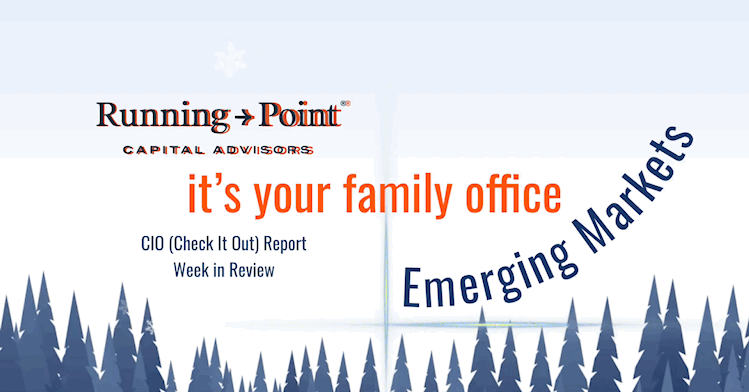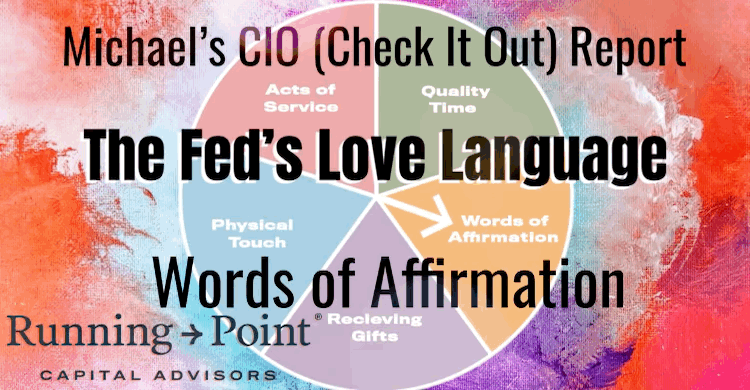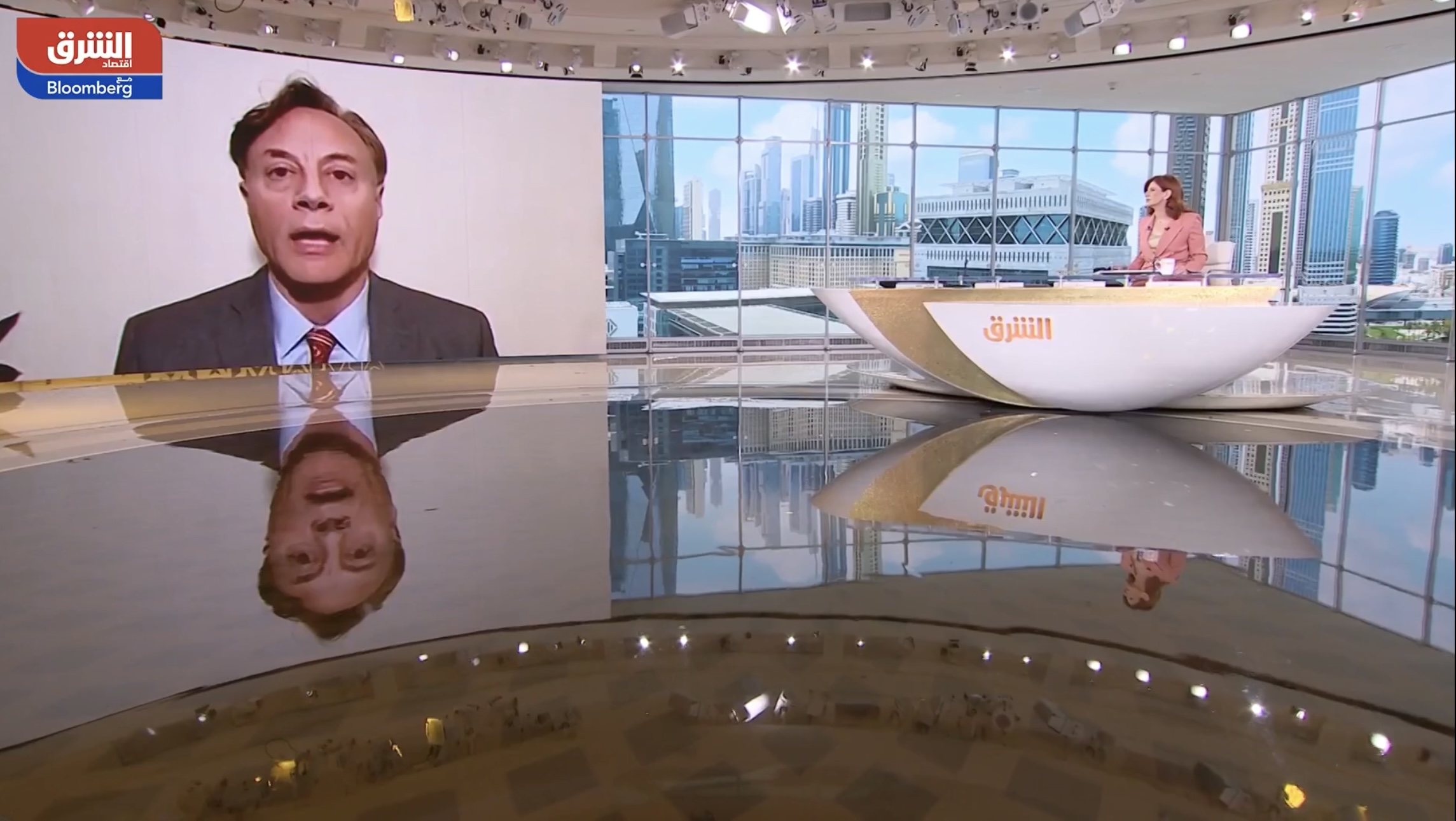Michael’s CIO (Check-It-Out) Report on the week just past — events, sarcasm, and global macro reflections
December 6, 2022

THEME: Emerging🐣
My CIO Report takes a different tack this week and examines emerging market investments
GL🥚BAL
Emerging bonds: Emerging-market (EM) credit (i.e., bonds or debt) should regain a reasonable foothold over the next 12 months specifically because of all the macro challenges it faced in 2022, including pandemic recovery, rising inflation, food insecurity, energy shortages and dislocations, the unstoppable ascent of the U.S. dollar, hawkish central banks, diminished liquidity, Russia’s invasion of Ukraine and its resultant migration crisis in eastern Europe, zero-COVID policy lockdowns in China, lower global economic growth, and the ravages of droughts and floods from global warming—honestly, there’s been no shortage of huge macro challenges this year🙄
Emerging adversity: There is always going to be some sort of adversity. Emerging-market dollar-denominated bond performance lagged this year as U.S. interest rates ascended from historically low levels (even though Fed Chair Jerome Powell towards the end of 2021 was declaring that rates would stay lower for longer)—A stronger U.S. dollar (which the Federal Reserve helped inflame) makes imports more expensive for nearly every other country and weighs on global economic growth and trade
Emerging rate cycles: Some EM countries—like Mexico, Brazil, and Chile—that were early to raise rates may be near the end of their central bank rate-hiking cycles ➜ Thus they may have room to lower interest rates and stimulate growth📈
Emerging debt: EM debt is not stupid cheap—there is still room for risky assets to get worse before they get better—but recent yields levels potentially offer a strong income return (aka carry) while investors wait for peak inflation, a change in U.S. Federal Reserve policy (aka a Fed pivot), economic recovery, or compelling returns⏳
Flashback “BRICS”: BRIC was coined in 2001 by Goldman Sachs an acronym for the then leading emerging economies—Brazil, Russia, India, China—later modified in 2012 to BRICS to include South Africa ➜ Fast forward and South Africa continues to grapple with major issues and Russia is a global pariah mired in a disaster of its own making, but Brazil, India, and China are economic powerhouses that could spark with the right political alignments⚡
Flashback “Fragile Five”: A phrase coined by Morgan Stanley in 2013 to describe the “Fragile Five” EMs — South Africa, India, Indonesia, Brazil, and Turkey — because they had high inflation, large current account deficits, challenging capital flow prospects, weak currencies and weak growth ➜ Fast forward and South Africa remains fragile; but India, Indonesia, Brazil, and Turkey are economic powerhouses with the 2nd, 5th, 8th, and 17th largest economies in the world
More flashback acronyms: MINT (Mexico, Indonesia, Nigeria and Turkey) minted in 2014 by Fidelity Investments; Next Eleven or N-11 (Bangladesh, Egypt, Indonesia, Iran, Mexico, Nigeria, Pakistan, the Philippines, South Korea, Turkey, and Vietnam) coined by Goldman Sachs; and the never catchy phrase CIVETS (Colombia, Indonesia, Vietnam, Egypt, Turkey and South Africa) coined in 2009 at the Economist Intelligence Unit (EIU) ➜ Acronyms come and go, but the demographics behind EM growth catch on occasionally
Emerging views: And yes, my views have also changed over the years—as they should—see “Around the World with Investment Skeptics”
Future forward: By 2030, four of the largest seven economies (in nominal GDP terms) will be EMs and six of the largest eight in purchasing power parity (PPP) terms will be EMs — “Inconceivable! Emerging market might not mean what you think it means” — By 2040, the 10 largest emerging economies will be double the size of the 10 largest developed economies🤺
Whipping boy, emerging victim, or risk off? Sometimes the problem is not directly with an emerging country or even emerging markets in general, but with investor risk appetite ➜ When a crisis occurs and investors want to decrease their portfolio risk, EM assets are often one of the early things to be jettisoned (sold off); and because EM assets have relatively thin or small markets compared to developed economy assets, their prices tend to decline faster
BIZNOMIC$
EM investing: Strategically, there are two main ways to invest in EM growth
- Direct exposure through EM investments (stocks, bonds, alternatives, and limited partnerships)
- Indirect exposure through developed economy multinational companies (DM stocks, bonds, alternatives, and limited partnerships) that derive a large or growing proportion of their profits or revenues from EM countries
PERSONAL
Louder: We were quoted by by Play Louder, in an article regarding using life insurance to build generational wealth ➜ Where and when appropriate, private placement life insurance (PPLI) is a strong option for generational and multigenerational wealth building — This is an area we know much about
Find me this week at the CFALA Holiday Social, the GFR & Progression Holiday Party (venture capital), and at the LA Investment Professionals Holiday shindig ❄
Make it a great week😊
Michael
~~~
Michael Ashley Schulman, CFA
Partner & Chief Investment Officer
Running Point Capital Advisors, your family office
“We deliver custom investment solutions, innovations, and unique perspectives to you and your family.”
Disclosure: The opinions expressed are those of Running Point Capital Advisors, LLC (Running Point) and are subject to change without notice. The opinions referenced are as of the date of publication, may be modified due to changes in the market or economic conditions, and may not necessarily come to pass. Forward-looking statements cannot be guaranteed. Running Point is an investment adviser registered with the U.S. Securities and Exchange Commission. Registration does not imply a certain level of skill or training. More information about Running Point’s investment advisory services and fees can be found in its Form ADV Part 2, which is available upon request. RP-22-71


